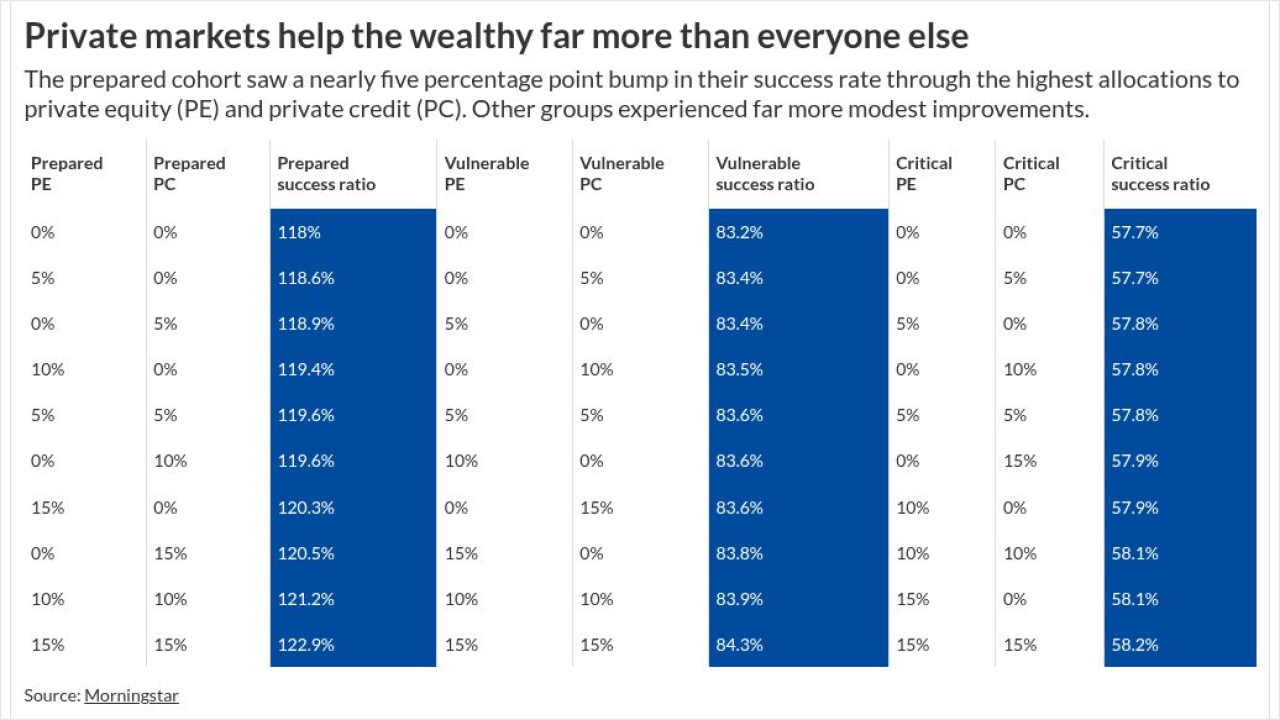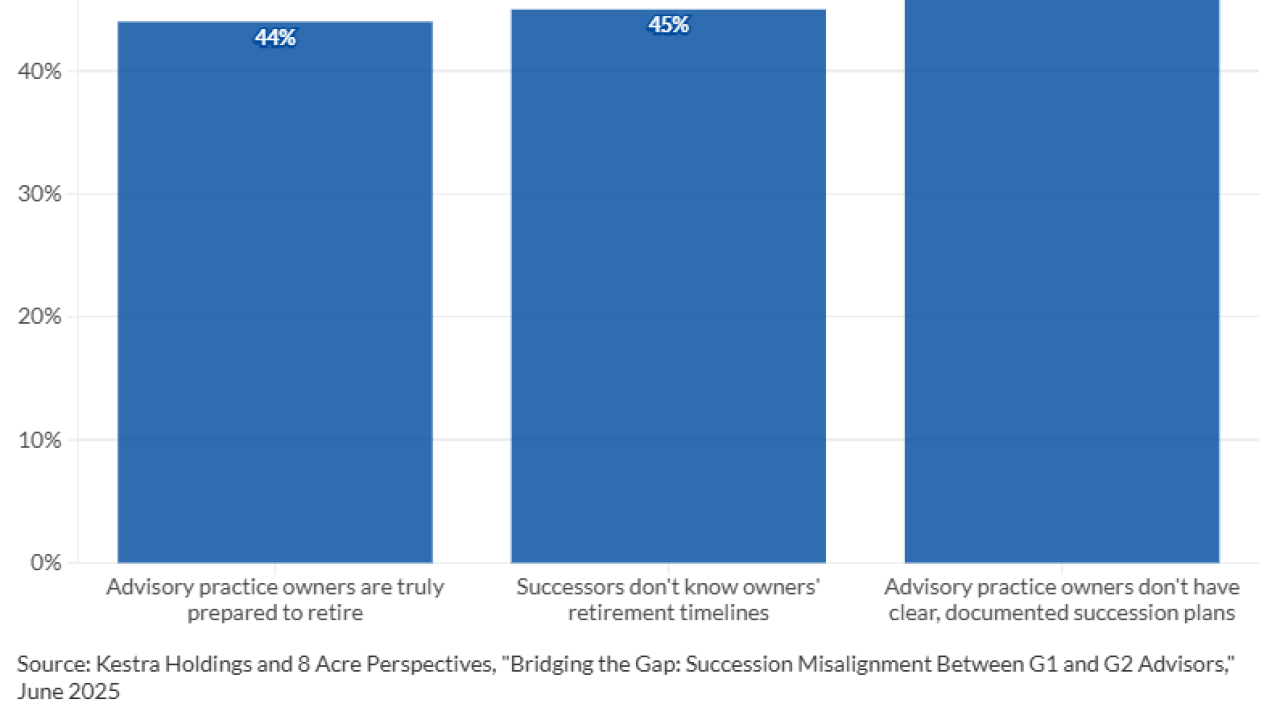Without the right planning, accumulating a large IRA can come along with some unexpected consequences for clients, including higher Medicare costs.
That said, forward-thinking advisors can help by recommending a number of strategies to keep Medicare costs in check, once clients take distributions from their IRAs and other retirement plans.
Here’s how the situation arises in the first place. Medicare charges premiums to participants in Medicare Part B, which covers doctor visits, and Part D, the prescription drug benefit. In 2018, the basic premium for
However, high-income individuals are required to pay more.
High income, in this case, is defined as those with modified adjusted gross income over $85,000 on a single tax return or $170,000 on a joint return. Their premiums are subject to a surcharge known as an Income Related Monthly Adjustment Amount, or IRMAA for short. These surcharges increase with income and can more than triple what Medicare participants pay for their benefits, costing thousands of dollars each year.
In 2018, for example, the
-
-
If history is a guide, your clients can stop freaking out about having enough money during their post-work life.
July 19 -
The Roth IRA has very low contribution limits, while those in high-income groups may not qualify to contribute to the account.
April 9

In 2019, a new additional income level of "over $500,000 single or $750,000 joint" will apply. Premium amounts for 2019 will not be announced until the end of 2018. However, as the surcharge at the new "over $500,000 / $750,000" income level will be set to collect 85% of plan costs, up from 80% at the current top level, the largest 2019 premiums can be estimated to be about 6% larger than the largest for 2018.
These IRMAA income thresholds are fixed through 2019. They will be adjusted for inflation starting in 2020.
IRMAA surcharges apply on a "cliff" basis. Reaching the first dollar of an IRMAA income level causes the full corresponding surcharge to apply to all premiums paid for the year.
Example 1: If Bob has MAGI of as much as $85,000 on his single return, he'll owe no surcharge. But if his income reaches $85,001, then a monthly surcharge of $53.50 for Part B plus $13.00 for Part D, or $66.50 total, will apply for all 12 months of the year. Bob’s $1 of additional income increases premium cost by $798 for the year.
Control income to minimize surcharges: For IRMAA purposes, MAGI is defined as Adjusted Gross Income (AGI) with adjustments for some income that is exempt from federal tax, such as interest from state and local bonds. Medicare uses the MAGI reported on the federal tax return from two years ago. For example, to determine whether someone will pay higher premiums for 2018, Medicare uses 2016 MAGI.
Similarly, the tax return filed for 2018, which can be strategized for the rest of this year, will be used to calculate IRMAA surcharges for the year 2020.
If income spikes temporarily, for only one year, surcharges apply accordingly. This may result from an event such as a large Roth IRA conversion, taking a large investment gain or even winning a lottery. There is no "it's only a one-time gain" exemption to owing a surcharge. However, if income drops the next year then that year's surcharge will be reduced accordingly.
Be aware of the RMD effect: Required minimum distributions (RMDs) can result in much higher health care costs. Don’t forget that this includes older beneficiaries who are subject to RMDs on inherited IRAs. An RMD is included in the MAGI used to determine Medicare Part B and Part D costs two years later.
Example 2: Jason is single and reached age 70 ½ in 2016. He took his first RMD of $5,000 in 2016, increasing his MAGI to $108,000. For 2018, his monthly Part B premiums will be $267.90 (base premium of $134 plus surcharge of $133.90) and his Part D surcharge will be $33.60 a month. Without the RMD, his MAGI would be $103,000, so his monthly Part B premium would be $187.50 with a Part D premium of $13.00. That’s a combined $101.00 less.
In other words, Jason’s RMD will cost him an extra $1,212 in 2018 for Medicare ($101.00 x 12 = $1,212.00).
Check a client's tax return to see if reported MAGI is near one of the threshold amounts. When MAGI is close to a threshold amount, take steps to keep it under the threshold. If income is close enough, any of a number of tax return strategies may do the trick. Looking ahead, plan realization of income and deductions to keep MAGI below the nearest threshold.
How Roth conversions can help: A Roth IRA conversion can be useful in minimizing future IRMAA surcharges as distributions from the Roth IRA can be tax free, reducing MAGI. To avoid a current income spike from a Roth conversion, consider making a series of partial conversions over a number of years to avoid pushing income into higher tax brackets. This is a strategy that requires long-term advance planning.
Clients who are in their early retirement years may want to consider converting to a Roth IRA sooner rather than later. By doing so, they can minimize the impact of RMDs on Medicare costs. RMDs are not required from Roth IRAs during the Roth IRA owner’s lifetime.
When a client converts, the conversion is included in the MAGI used to determine Medicare Part B and Part D costs two years down the road. Therefore, clients will ideally want to consider converting to a Roth IRA before the extra income would affect their Medicare costs. This is a strategy that should be discussed with clients in their early 60s. As the examples below show, thinking ahead and doing the conversion before it can impact Medicare premiums can save a client thousands of dollars.
Example 3: In 2015, Maria, age 62, became concerned about how future RMDs from her million-dollar IRA would affect her Medicare costs. She converted her IRA to a Roth IRA. The conversion is taxable in 2015 and included in Maria’s MAGI for that year. However, it will not affect Maria’s Medicare premiums, because 2018 is the first year that Maria will participate in Medicare. The MAGI reported on Maria’s 2016 federal tax return will determine Maria’s premiums for 2018. By converting in 2015, Maria avoids her conversion impacting her Medicare costs.
Example 4: Maria’s twin sister Kathy gets wind of Maria’s successful strategy. She decides to convert her million-dollar IRA too, but delays doing so until 2016. Her conversion is taxable in 2016 and included in her MAGI for that year. Unlike her sister, Kathy will see a big impact on her Medicare premiums. This is because 2018 is the first year Kathy will participate in Medicare, and the MAGI on her 2016 return will determine the size of her premiums. Converting her million-dollar IRA in 2016 increases her MAGI to the highest IRMAA income level. For 2018, she will owe a Medicare Part B premium of $428.60 and Part D surcharge $74.80, monthly.
Converting later may still be an effective strategy. A Roth conversion will negatively affect MAGI for Medicare purposes for only one year. It may make sense to take that hit to eliminate all RMD concerns in the future.
Example 5: Kathy from our previous example got hit hard with Medicare costs in 2018 due to her conversion in 2016. But she will never have to take RMDs from her Roth IRA. She will avoid having RMDs increase her Medicare costs in all years after she reaches age 70 ½.
Health savings accounts offer another strategy: Younger clients may want to consider funding an HSA rather than an IRA, if they have a choice. No one is expecting the cost of medical expenses in retirement to decrease. They can make deductible HSA contributions in their working years, then access their HSA tax and penalty free to pay for qualified medical expenses in retirement. This is the best of both worlds. These qualified distributions are not included in MAGI for Medicare purposes.
Qualified charitable distributions also minimize income: For older clients, QCDs may help minimize the impact of an IRA on Medicare costs. As a result of the new tax law’s increased standard deduction amounts, many clients won’t be deducting contributions, so QCDs are more valuable for income tax planning. And they can help avoid Medicare premium increases too.
With a QCD, an IRA owner (or beneficiary) who is age 70 ½ or older can transfer up to $100,000 annually from their IRA to a charity tax free.
A QCD can satisfy an IRA owner’s RMD for the year, and the RMD is never included in income at all, so it is not included in MAGI. Keeping the RMD amount out of MAGI can result in big savings. This is not the case, however, if an IRA owner takes an RMD then donates to charity and claims a charitable deduction. With that approach, the RMD would still be included in MAGI.
Example 6: Jason, from our prior example, decides to do a QCD of $5,000 to satisfy his RMD in 2016. The $5,000 RMD is not included in the 2016 MAGI used to determine his Medicare costs for 2018. Jason’s QCD will save him $1,212 in 2018 in Medicare costs.
If Jason had instead taken his RMD and made a charitable donation of $5,000, this would not have lowered his Medicare costs.
A client not using QCDs to satisfy RMDs can start doing so and see benefits two years down the road. Depending on income levels, clients may benefit in some years but not others, but this strategy is worth looking into annually. If a client is charitably inclined and would be making a donation anyway, why not do a QCD and save hundreds or even thousands in Medicare costs, as well as income taxes? This is a win-win result for a client.
As a reminder, the QCD is only available for IRAs, not company plans. Also, donor-advised funds and private foundations are not eligible recipients.
Other strategies that can be used to manage MAGI to minimize Medicare surcharges include:
- Timing investment gains and other income by accelerating them onto a tax return for a year before IRMAA calculations occur, or deferring them to a year when income is expected to be lower and there may be offsetting losses.
- Obtaining spending funds from tax-free sources. For instance, one may borrow against a life insurance policy rather than take a taxable distribution from a retirement plan, or use tax-free proceeds from the sale of a principal residence (as much as $250,000, or $500,000 on a joint return).
- Home equity is another source of tax-free cash, which can be tapped via a reverse mortgage (a home equity conversion mortgage). The HECM credit line can be drawn on tax free, with no corresponding mortgage payment expense.
- Investing in appreciating assets and for tax-deferred income, rather than current income.
Clients approaching their Medicare eligibility years obviously need planning help. Sometimes, an admirable strategy of saving wisely and amassing a large IRA can have unforeseen negative consequences, including higher Medicare costs. Advisors cannot afford to be caught off guard. Careful planning with IRAs can help minimize the bite of Medicare costs. Roth conversions, HSAs and QCDs are all strategies worth discussing with clients.
To find more valuable tax insights from Ed Slott,





